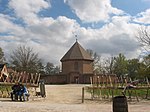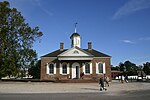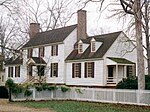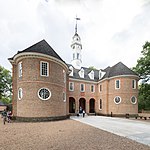Williamsburg Inn
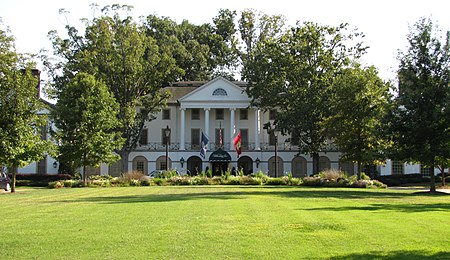
Williamsburg Inn is a historic resort hotel located at Williamsburg, Virginia. It was built in three phases between 1937 and 1972. The original section was designed by Perry Dean Rogers Architects and is dominated by a two-story portico which stands atop a ground floor arcade. It is a three-story, seven-bay, Colonial Revival style brick structure. It has two-story flanking wings in an "H"-shape. The East Wing addition, also by Perry Dean Rogers Architects, consists of multiple wings of guest rooms set at right angles to one another. A third phase embracing the Regency Dining Room and its adjoining courtyard, was completed in 1972. The Williamsburg Inn is one of the nation's finest resort hotels, internationally acclaimed for its accommodations, service and cuisine. It represented John D. Rockefeller Jr.'s commitment to bring the message of Williamsburg to a larger audience of influential Americans. It was listed on the National Register of Historic Places in 1997. Williamsburg Inn is a member of Historic Hotels of America, a program of the National Trust for Historic Preservation.The inn has twice hosted Queen Elizabeth II and her husband Prince Philip, Duke of Edinburgh, in 1957 and 2007 while visiting Jamestown, Virginia. These visits marked the original settlement of the British colonists on the 350th and 400th anniversaries when the British first landed in America.
Excerpt from the Wikipedia article Williamsburg Inn (License: CC BY-SA 3.0, Authors, Images).Williamsburg Inn
Francis Street East, Williamsburg
Geographical coordinates (GPS) Address Phone number Website Nearby Places Show on map
Geographical coordinates (GPS)
| Latitude | Longitude |
|---|---|
| N 37.268888888889 ° | E -76.697777777778 ° |
Address
Williamsburg Inn
Francis Street East 136
23185 Williamsburg
Virginia, United States
Open on Google Maps

